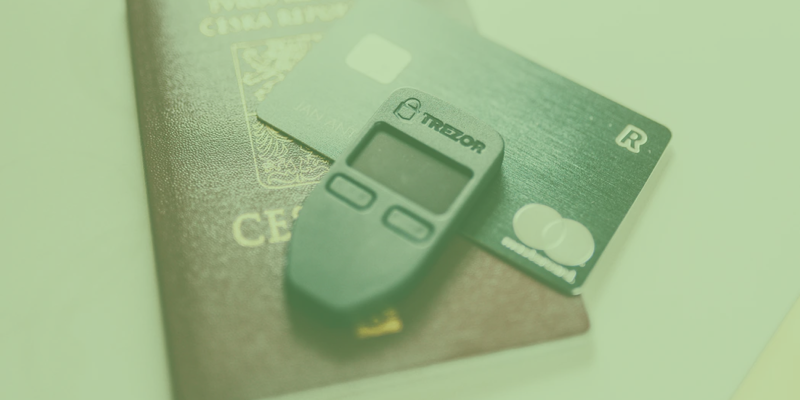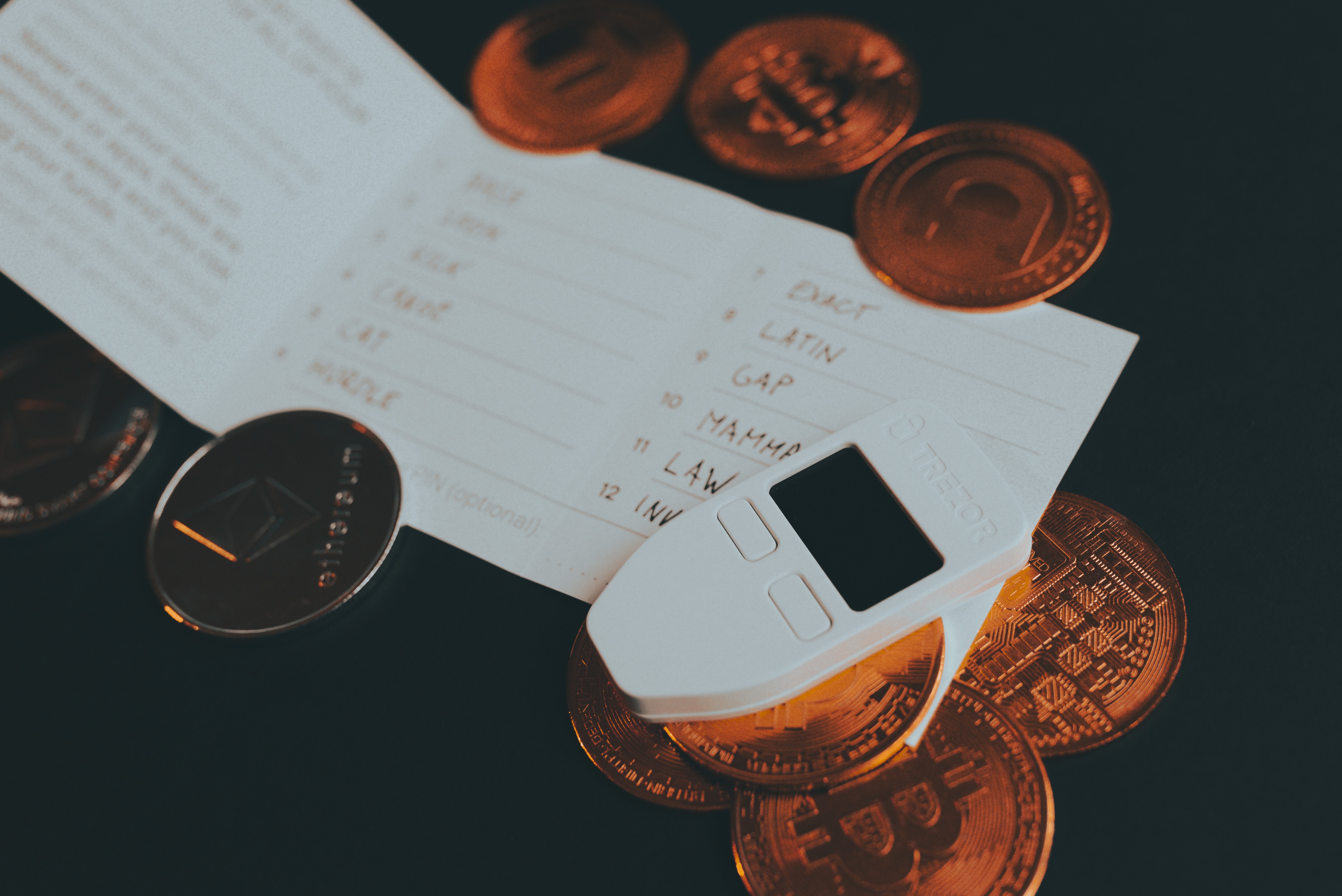In this post, I will compare and rate the best hardware wallets for storing bitcoin. For a small cost, hardware wallets give owners of bitcoin a convenient yet incredibly secure way to store and manage their coins. Owning and using a hardware wallet is a bit like having your own personal Fort Knox for your bitcoin.
However, it’s worth noting that bitcoin ‘wallets’ don’t actually store your bitcoin – they store the keys which allow you to spend your bitcoin. Your bitcoin only exists as 1s and 0s on a distributed ledger maintained by thousands of nodes. For that reason, in this guide we’ll refer to the physical devices that sign bitcoin transactions as both bitcoin ‘hardware wallets’ and ‘signing devices’ interchangeably.
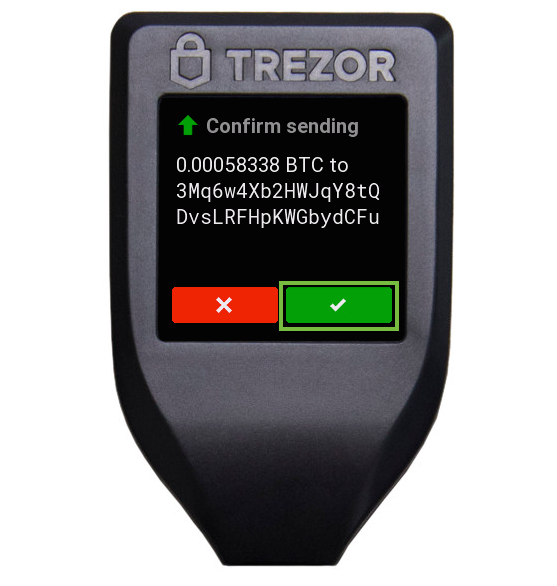
If you plan to store bitcoin for a long time and don’t want to risk losing it to exchange hacks or theft, you’ve come to the right place. This is your ultimate guide to Bitcoin hardware wallets, written by a real Bitcoiner with personal experience using many wallets and signing devices since 2016.
- What is a cryptocurrency hardware wallet?
- Why buy a hardware wallet?
- How does a Bitcoin hardware wallet work?
- The Best Bitcoin Hardware Wallets in 2022
- ColdCard Mk4: Best Bitcoin Hardware Wallet for Long Term Holders
- Foundation Passport: Best Beginner Hardware Wallet ($10 off)
- BitBox02: Sleek and Simple Signing Device
- Trezor Model One and Model T: Established Players
- Keystone Pro: Big Screen, Small Reputation
- NGRAVE ZERO: Lots of Flash, Less Substance
- Ledger Nano S Plus and Nano X: Established Players #2
- KeepKey: Cheap but Less Secure
- Caution: Read Before Buying!
- Welcome to Self-Custody
What is a cryptocurrency hardware wallet?
A cryptocurrency signing device holds the owner’s private keys to their bitcoin in an ‘airgapped’ way, meaning the private keys are never exposed to the internet or other devices. This makes it nearly impossible for a hacker or even thief of the physical device to gain access to your bitcoin. The physical device, however, makes it simple and convenient for you to manage or spend your bitcoin when you’d like to.
Your keys can also be backed up with a 12 or 24 word ‘seed phrase’ which you can use to recover your private keys should you lose or break your hardware signing device. You can save these words on paper or better yet on stainless steel plates. Every signing device I’ve reviewed in this article allows you to access your seed phrase – this is an incredibly important feature, eliminating your reliance on the electronics in that device or the device maker.
Some signing devices store keys for many types of digital coins and securities beyond Bitcoin. This may seem like an advantage – and many online reviewers state this as a plus – but the more coins a hardware wallet needs to store, the more distracted the development team is away from securing your bitcoin. Bitcoin-only hardware device makers can focus much more on security, instead of interoperability.
Why buy a hardware wallet?
Buying a bitcoin hardware wallet might seem excessive. You could buy more bitcoin with the fiat you spend on a signing device! However, a hardware signing device gives you unmatched security, which in turn provides peace of mind. If you store your bitcoin on an exchange, you are exposed to all sorts of risks and troubles – many of which I have personally experienced!
For one, you can lose your bitcoin entirely to a hack or a bankruptcy.
Here are two of the most famous bitcoin exchange hacks:
| Famous Hacks | Date | Stolen | Customer Impact |
| Mt. Gox | From 2011 until February 2014 | 840,000 bitcoins (Over $16 billion at time of writing) | Customers are still waiting today for the portion of recovered bitcoins to be returned. |
| Bitfinex | August 2016 | 119,756 bitcoins (~$72 million then, $2.3 billion at time of writing) | 36% loss shared between all customers, with Bitfinex tokens to be handed equal to each customer’s personal loss. |
Bitcoin lenders who hold bitcoins for their customers can also go bankrupt and cause disruptions or losses for their customers. The lender Celsius declared bankruptcy in July of 2022, causing them to lock all customer accounts and claim ownership of the bitcoin customers were keeping with them. Even publicly traded companies with strong brand reputations are not safe: Voyager Digital pulled a similar move to Celsius, also in July of 2022, when they declared bankruptcy.


The bottom line is that if you do not have the keys to your bitcoin, you do not really own that bitcoin. As we say: “not your keys, not your coin”. A hardware wallet allows you to take control of the keys to your bitcoin, making them immune to hacks and bankruptcies. Securing your bitcoin with a dedicated hardware signing device means your coins will be yours, safely, no matter who goes bankrupt. Even if a highly sophisticated hacker gets their hands on it, a good signing device ensures your coins will remain safely in your control.
This is the power of a bitcoin hardware wallet: full control over your money!
However, with great power comes great responsibility – which is why you should read this entire article (and more!) to understand the best choice of signing device for you and how to set it up securely.
How does a Bitcoin hardware wallet work?
A Bitcoin hardware wallet works by storing the private keys to your bitcoin on a chip inside a small device, usually something that looks like a phone, calculator, or USB memory stick.
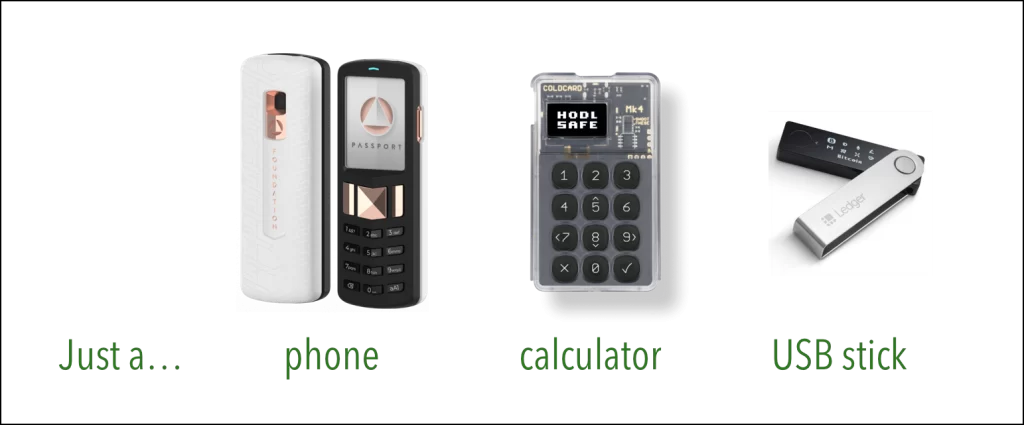
A good hardware wallet – or ‘signing device’ – stores your keys in an ‘airgapped’ way, meaning those keys are never exposed to other devices or the internet. There is a gap of air between your key and the rest of the world – hackers included. When you want to spend some bitcoin using those private keys, your device creates a transaction file. Then, that transaction file moves over the air or a wire to a computer or phone where it is broadcast to the Bitcoin network. The ‘signature’ needed to create the valid transaction is computed inside the hardware device, away from any prying hackers.
With any bitcoin hardware signing device, you’ll need a free software wallet as well that runs on your computer or phone and allows you to view your balances and set up transactions. Your signing device is still necessary to ‘sign’ any transactions out of that wallet, so even if your phone or computer is hacked, your bitcoin cannot be touched. This setup makes it simple to receive and monitor your bitcoin while making it very difficult for an attacker to steal your coin.
Some hardware signing device manufacturers provide their own app to allow easy management of your bitcoin, however these are not the best for privacy since that company’s servers may see your transaction history. Thankfully, there are many free and open source wallets like Bluewallet, Sparrow and Specter which you can use with just about every hardware signing device on the market. Plus, you can connect these to your own Bitcoin full node for increased privacy.
The process to store your bitcoin on a hardware device varies by device, but typically looks like this:
- Power up your hardware device
- Generate and write down your 24-word seed phrase – this IS your bitcoin, so don’t lose it!
- Load up a Bitcoin address on your hardware signing device or connected software wallet
- Send your bitcoin to that address
- Kick back and enjoy your peace of mind
When you want to spend your bitcoin, you simply:
- Create a transaction in your preferred wallet software
- Connect your hardware signing device to your computer or phone
- Sign the transaction you created
- Broadcast the transaction to the network of bitcoin nodes
- Unplug your device
The first time you set up and use your bitcoin hardware wallet may be daunting, but it quickly becomes second nature. If you need some help at any point, there are plenty of video walkthroughs from YouTubers like BTC Sessions to help you with your specific device.
The Best Bitcoin Hardware Wallets in 2022
I’m ready to deliver to you all the best hardware wallets for storing bitcoin in 2022. I looked at each signing device across these dimensions, and rated each from 1 to 5:
- Ease of Use: How simple is it to get started with and use the signing device?
- Feature Depth: Does the signing device offer advanced features for users that enhance security or usability?
- Security*: How secure is the software and hardware? Open source software and Bitcoin-only count here.
- Reputation: How reputable is the company and team in the security and Bitcoin world? Included here are how long the device has been in the market, as well as online reviews.
- Guides: Does the company, or external reviewers, provide in-depth user guides for the device?
* I doubled the importance of security within the total rating for each signing device, since this is the primary benefit of a hardware wallet. An insecure signing device defeats the entire purpose!
Without further ado, here are my rankings with breakdowns below:
| Hardware Wallet | Rating out of 5 | Ease of Use | Features | Security | Reputation | Guides | |
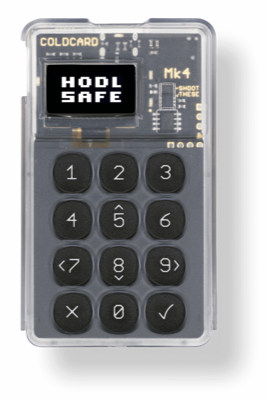 | Coldcard MK4 | 4.8 | 4 | 5 | 5 | 5 | 5 |
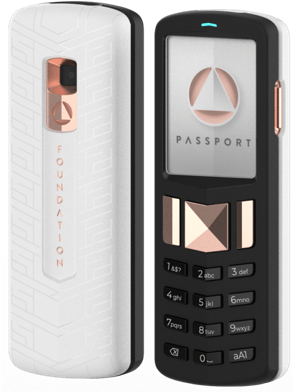 | Foundation Passport | 4.0 | 5 | 3 | 5 | 3 | 3 |
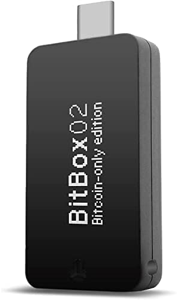 | BitBox02 | 4.0 | 4 | 3 | 4 | 4 | 5 |
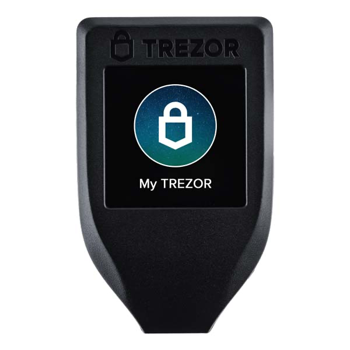 | Trezor Model T | 4.0 | 5 | 3 | 3 | 5 | 5 |
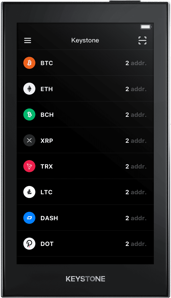 | Keystone Pro | 3.8 | 5 | 3 | 4 | 3 | 4 |
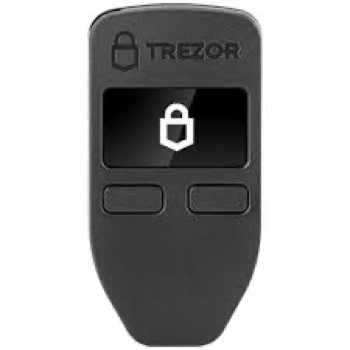 | Trezor Model One | 3.2 | 3 | 2 | 2 | 5 | 5 |
| NGRAVE Zero | 3.2 | 5 | 2 | 3 | 2 | 4 | |
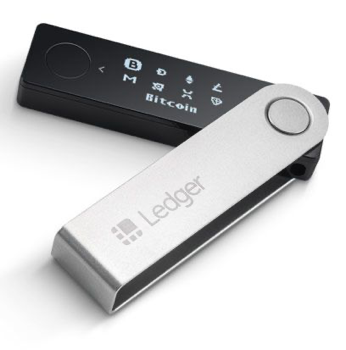 | Ledger Nano X | 3.0 | 2 | 2 | 2 | 5 | 5 |
| Ledger Nano S Plus | 3.0 | 2 | 2 | 2 | 5 | 5 | |
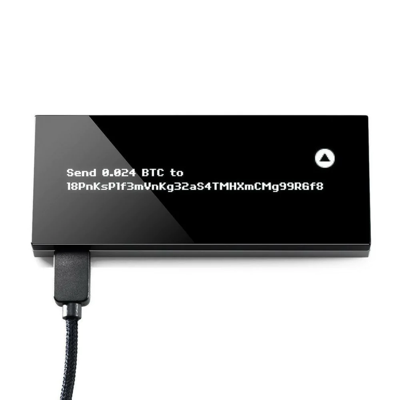 | Keepkey | 2.7 | 4 | 2 | 1 | 4 | 4 |
ColdCard Mk4: Best Bitcoin Hardware Wallet for Long Term Holders
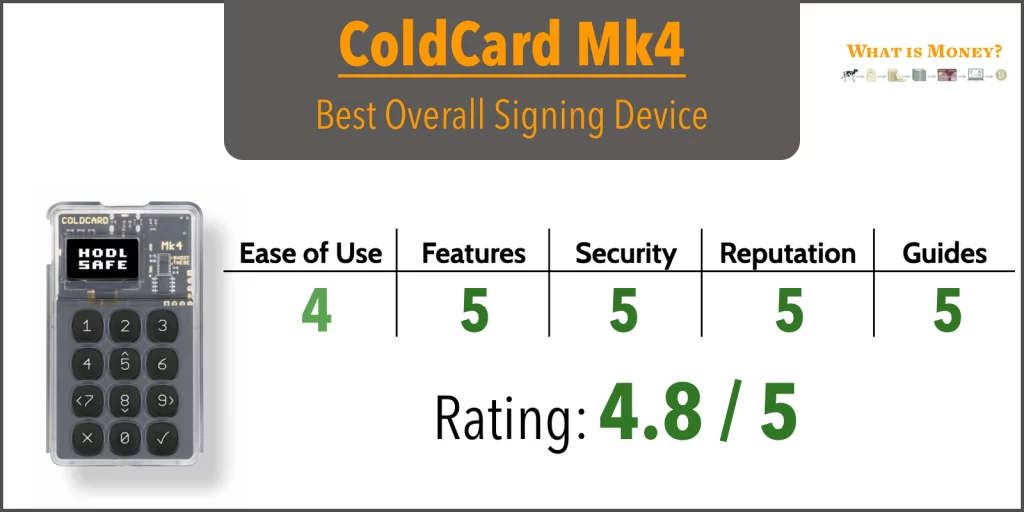
The ColdCard is the best hardware wallet on the market, in my opinion, for several reasons. First and foremost, the ColdCard prioritizes security above everything else. From supply chain to hackers to wrench attacks, the team behind the ColdCard at Coinkite thought of nearly everything – and far more than their competitors. Before the ColdCard even reaches you, it’s shipped in a tamper-evident bag with serial numbers that need to match across the bag, a slip inside the bag, and the device itself once powered on.
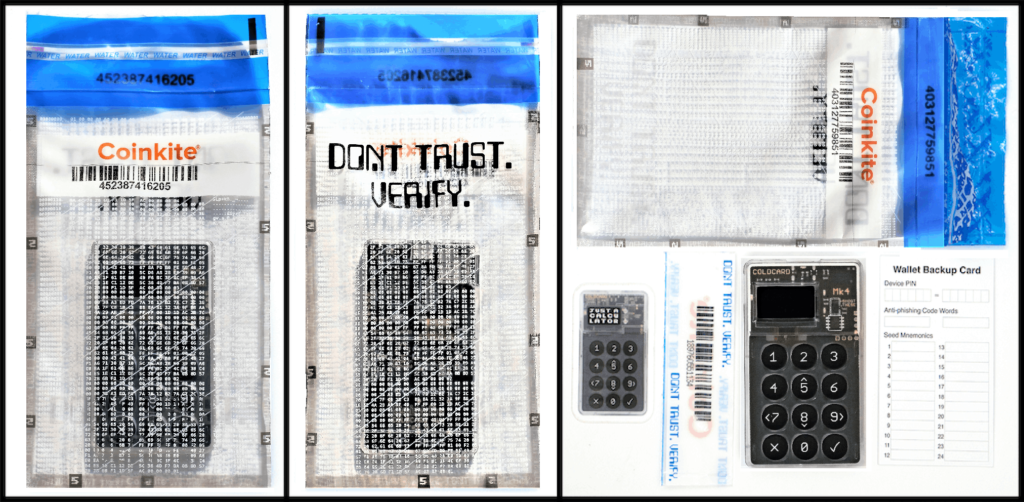
The clear case allows you to view the electronics, many of which are covered in swirls of epoxy to make any tampering clearly evident. Inside, Coinkite placed dual secure elements and a microprocessor. The firmware running on the microprocessor is fully open-source and auditable, while the firmware on the secure elements is closed source and protected by the manufacturer of that secure element. The secure element stores your seed and is built to resist multiple types of attacks both software and hardware related.
You can generate addresses on the device, display address QRs, and enter any passphrases right there instead of on a computer. Plus, the ColdCard Mk4 is natively Bitcoin-only! No other botched code for digital securities could possibly compromise your bitcoin.
Advanced features extend the safety of the ColdCard, including airgapped transactions using a MicroSD card as well as ingenious Duress, Brick, and Countdown PIN codes, helping reduce the threat of the $5 wrench attack. During setup, the ColdCard allows you to increase the entropy (randomness) of your seed phrase by manually entering dice rolls, ensuring even malpractice by ColdCard the company doesn’t make your seed phrase vulnerable. You can even split your seed into multiple seeds using SeedXOR, a simpler and more powerful version of the Shamir Secret standard first used in the bitcoin world by Trezor. Beyond security features, the Mk4 also introduced NFC connection to seamlessly approve transactions on an NFC-enabled mobile phone.
You will need to use ColdCard with a watch-only wallet like Specter or Sparrow, since ColdCard doesn’t make an app of their own. This might be a downside in terms of usability, but is a big plus for security and flexibility. The ColdCard device itself is simple to use with great walkthroughs of all functions as you’re using it.
Coinkite – the company behind the ColdCard – has a great reputation in the Bitcoin space, and has been making hardware out of their Toronto headquarters since 2012. In addition to their latest ColdCard Mk4, they also sell seed backups, SD cards, cords, Opendime one-time-use wallets and more – even in bundles with ColdCards!
Best of all, the ColdCard comes at an affordable price considering its features and the other signing devices on the market.

Video: Everything you need to know to set up a ColdCard – BTC Sessions
Guide: ColdCard Quickstart – Coinkite
Foundation Passport: Best Beginner Hardware Wallet ($10 off)
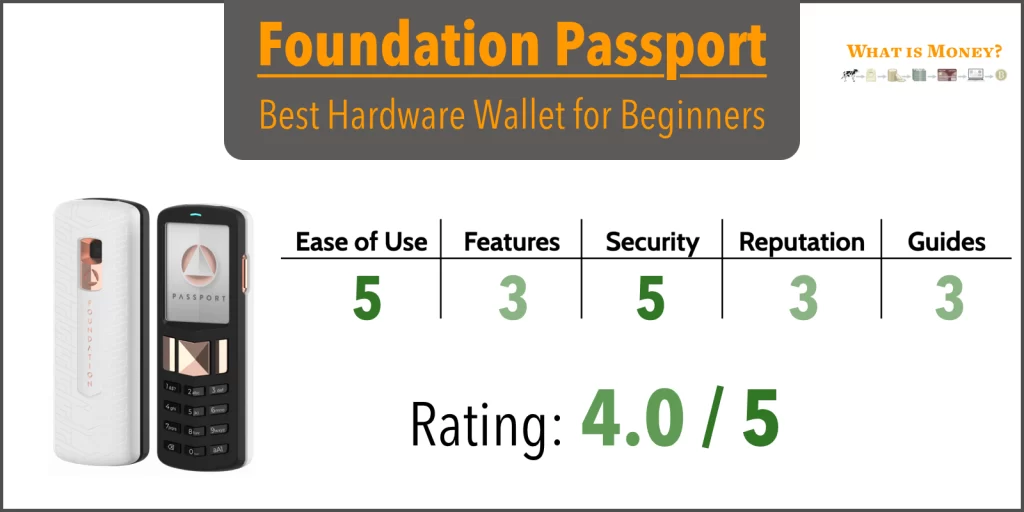
The Foundation Passport is the signing device I’d recommend for a total beginner that wants a simple yet secure hardware wallet. While the first Passport device was released in a small batch just in 2020 and the new device just started shipping in 2022, Foundation is doing everything right.
Order the Foundation Passport with code WIM for $10 off!
First off, the device is easy to use and comes in a familiar form factor resembling an old Nokia phone. The Envoy app, made by Foundation as a companion to the Passport, makes setup and management of the Passport device and the funds it secures straightforward. Foundation clearly took the best security standards in the industry and combined them with great user experience design.
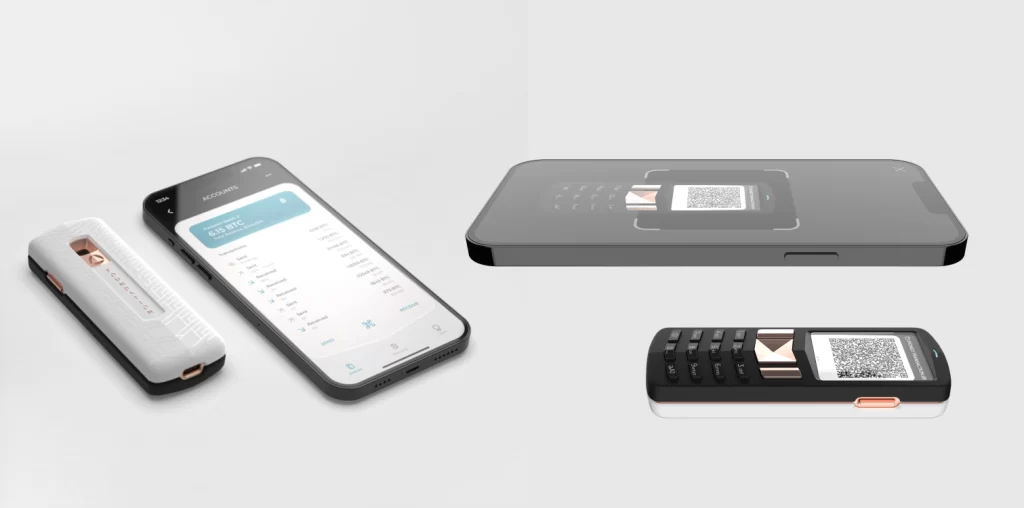
The Passport device has a large color screen for displaying address information and QRs. Signing and sending transactions is not only possible through the Envoy app, but also wallets such as Bluewallet on mobile devices and Sparrow on desktop through its completely airgapped dynamic QR code system. The computer passes information to the Passport via a series of QR codes scanned with the camera on the Passport displays information via QRs that the computer can pick up via webcam.
From a security standpoint, the Passport’s airgapped operation and lack of communication features like Bluetooth is a big plus. There are also flags built into the hardware to alert you to faulty firmware, like the light on the top of the device. Foundation put a secure element in the device to handle secrets similarly to ColdCard. Backups of the seed can be encrypted and saved to MicroSD cards if you prefer this method over writing down your 24-word seed, which you can do as well.
While you won’t find too many reviews and guides to this device on the web, Foundation provides ample documentation on every feature of the Passport.
The Passport is not the cheapest device I looked at, but the ease of use and strong security make it worth every penny.

Video: How to set up your Foundation Passport – BTC Sessions
Guide: Foundation Passport Setup Guide – Foundation Devices
BitBox02: Sleek and Simple Signing Device
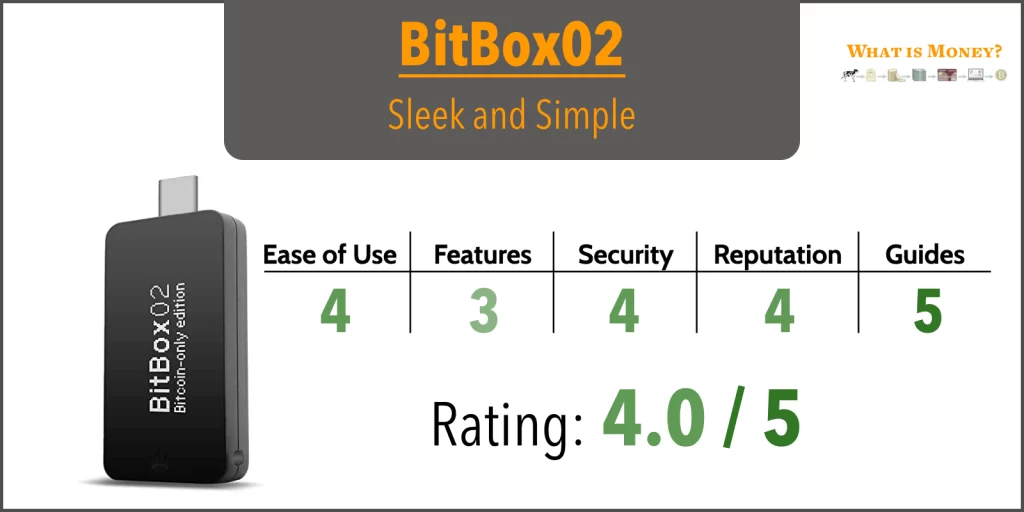
The BitBox is a unique hardware wallet device, with ease of use almost matching Trezor’s Model T while security comes close to airgapped and advanced devices like the ColdCard and Passport. I’ll start with BitBox’s interface, which is unlike any other signing device. Instead of buttons or a touchscreen, the BitBox02 has a sliding touch interface on its sides that allows you to quickly and intuitively type text and scroll through long addresses for verification. The signing device plugs in like a USB drive to any computer and even some Android phones, providing a simple usage pattern we’re all familiar with.

From a security standpoint, the BitBox02 provides several great features. For one, you can type in your password and passphrases on the device itself, using the touchpad. Similar to the ColdCard, you can generate your own seed phrase using dice rolls, eliminating the risk of someone stealing your seed phrase before you receive the device. Inside the device, there’s both a microprocessor and a secure element, giving you the best of both worlds as far as impenetrable hardware along with open source firmware. Epoxy covers critical components making them nearly impossible to tamper with.
Unfortunately, the device cannot deliver signed transactions without connecting to a computer (it’s not ‘airgapped’) which is a big downside. Additionally, you will need the BitBox app to set up the device, which is a big downside in my opinion. Also, the BitBox02 supports a variety of coins, although they do offer a Bitcoin-only firmware version. Supporting more coins represents a distraction for the team behind the BitBox.
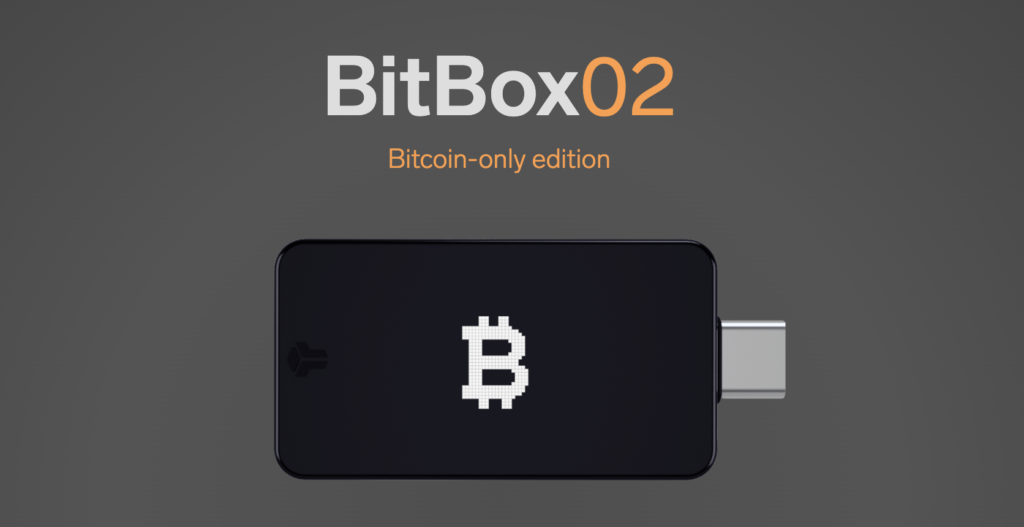
By default, the BitBox backs up your keys to a MicroSD card, which is underwhelming. I’d prefer they showed the 24 word seed phrase, as a MicroSD is easy to destroy or lose. If you lose both that and your BitBox02, you’re out of luck on getting your coins back.
Pro Tip: When rolling dice to create entropy in your seed phrase, you can verify that your signing device is operating correctly by putting your rolls in Ian Coleman’s Mnemonic Code Converter and checking that the results match what your device shows you.
Speaking of the team behind BitBox, they are based in Switzerland in a company called Shift Crypto. They opened shop in 2015, and have a good reputation in the community. They provide a decent set of guides for the BitBox02 to supplement third-party reviews and walkthroughs, and the device itself provides great contextual nudges as you’re setting up.
The BitBox02 comes in at a fair price point for the industry, making it a good starter device for someone just getting into bitcoin.

Video: How to Setup & Use the BitBox02 – Shift Crypto
Guide: BitBox02 Welcome Series No. 1 – Shift Crypto
Trezor Model One and Model T: Established Players
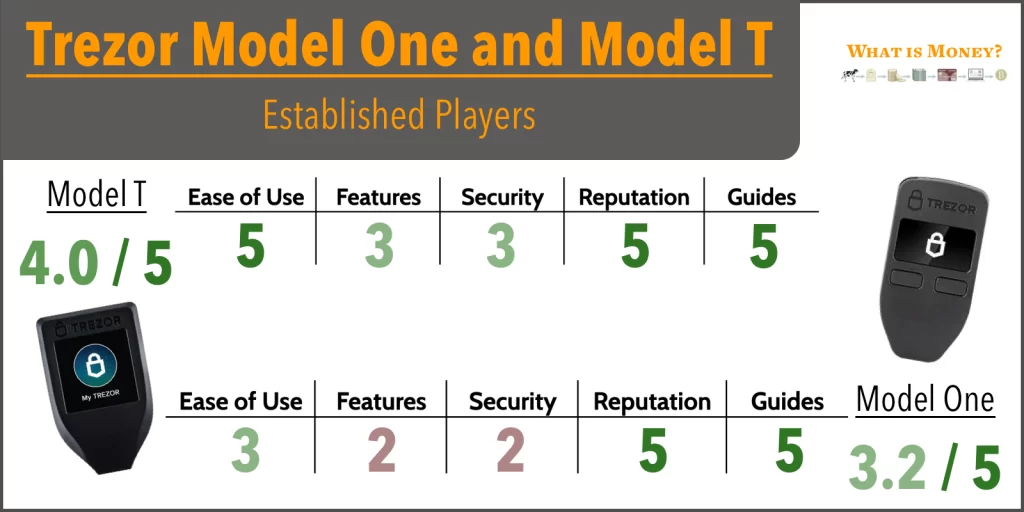
My first hardware wallet was a Trezor Model One, so I have a special attachment to this brand. Trezor devices are flexible and solid, with an unmatched long standing reputation in the community for producing secure and easy to use signing devices.
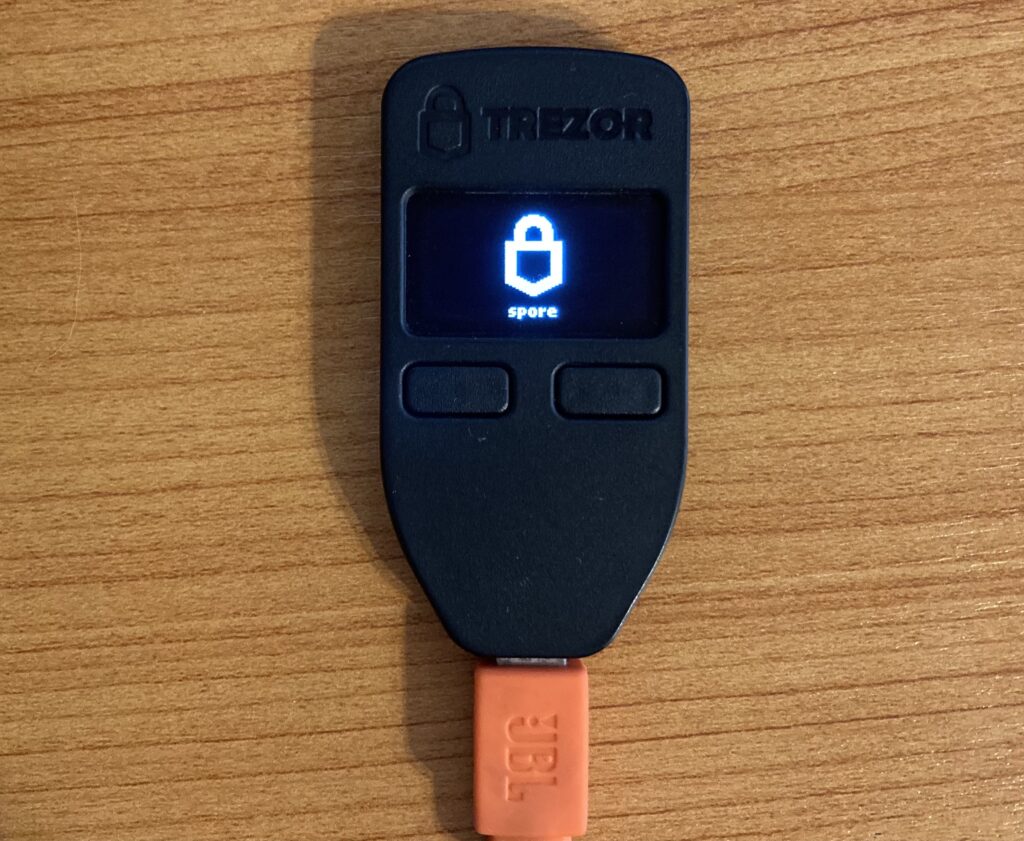
Trezor also gives you the open-source Trezor Suite to manage your holdings on your computer, though you can pair the Trezor with just about any software wallet on the market today like Sparrow or Specter. Navigation on both the Model One and Model T is simple, especially on the large color touchscreen of the Model T. Both devices can show a full QR code for a Bitcoin address, ensuring no hacker can maliciously change that QR code. The Model T also allows you to enter your PIN and passphrase directly on the device, which is a big boost for security. The Model T also supports Shamir backups, which are a complicated but useful method for splitting up your backup into multiple locations without a single point of failure.
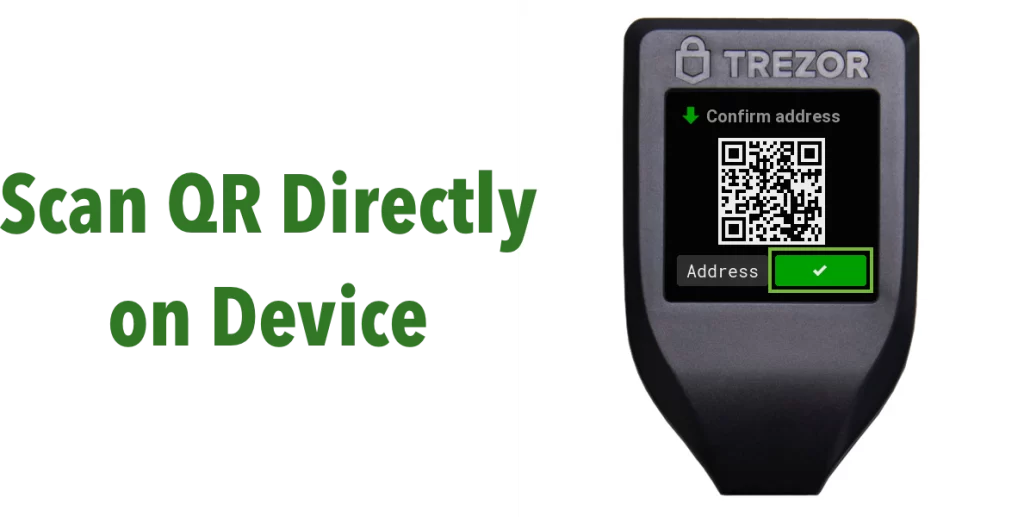
From a security standpoint, the Trezor devices have a solid reputation but now fall short compared to other airgapped devices on the market that utilize secure elements, like the ColdCard and Foundation Passport. The Model One requires the user to input their PIN and passphrases on a computer, meaning they could be swiped by a keylogging app. Both devices support multiple coins natively, though there is an option for Bitcoin-only firmware.
With physical access to the device, hackers have demonstrated how to extract a PIN and seed from a Trezor device. The lack of secure element on both devices is a good thing for auditability, but also means more ‘sidechannel’ attacks like Voltage Glitching and Read Protection Downgrade are possible. A sidechannel attack makes use of real-world signals – like electromagnetic signals coming from power consumption on the chip – to read data like the PIN and seed phrase.
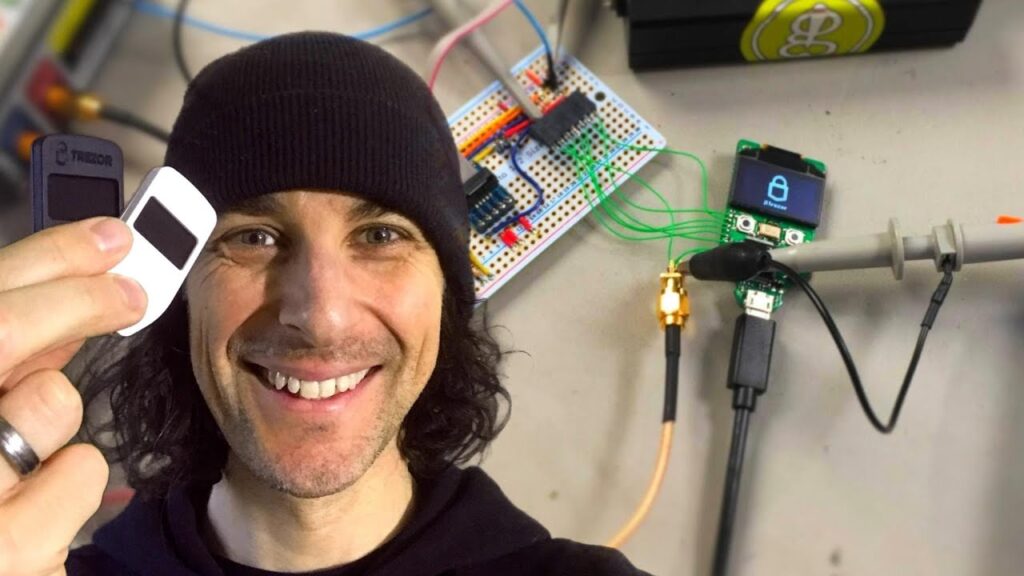
For their part, Trezor is always responsive to newly disclosed vulnerabilities with firmware patches and they delete customer data 90 days after purchase, limiting the chance your shipping address could be leaked in a hack of Trezor’s customer database. The Model T works around a lot of the issues with relying on a microprocessor for this signing device by supporting an SD protected mode. In this mode, a MicroSD is loaded with a secret and needs to be plugged into the device to unlock it.
Trezor has a generally solid reputation in the industry, and due to the affordable cost of their devices and time in market there are a plethora of community reviews and resources. The Trezor website hosts an extensive Learn section as well as forums and direct support from the company.
The Trezor Model One and Model T are fairly priced, however if you are looking for peace of mind for long term storage I still recommend a ColdCard or BitBox as starter devices.
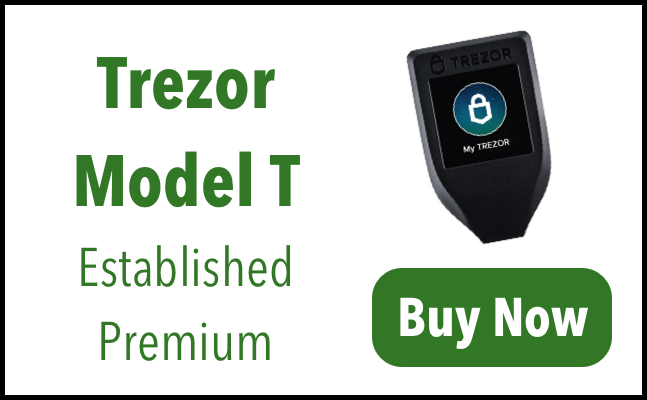
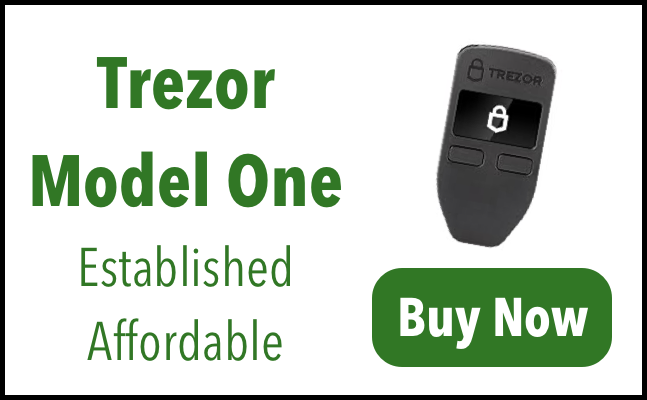
Trezor Model T
Video: Trezor Model T – How To Use A Bitcoin Hardware Wallet – BTC Sessions
Guide: Get started with Trezor Model One – Trezor
Trezor Model One
Video: How to Set Up a Trezor One Tutorial – Crypto Blick
Guide: Get started with Trezor Model One – Trezor
Keystone Pro: Big Screen, Small Reputation
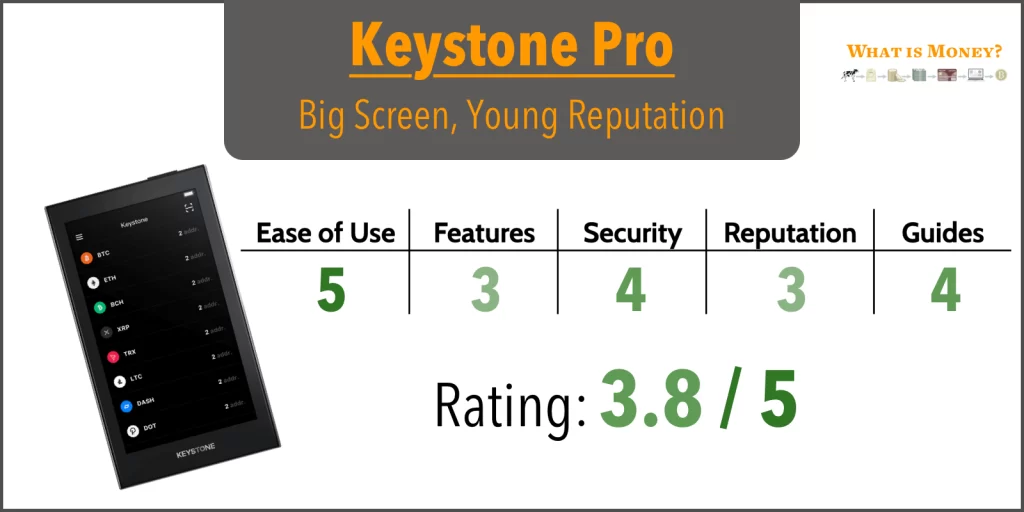
The Keystone line of hardware devices (I focused on the Pro) distinguishes itself with a large 4 inch touchscreen similar to a smartphone and a totally airgapped operation through QR code communication, similar to the Foundation Passport.
With such a large screen able to display dynamic QR codes, the Keystone Pro is capable of connecting to multiple phone and desktop software wallets like Bluewallet or Sparrow for watching and managing transactions. Besides being able to enter PINs and passphrases on the device using an onscreen keyboard, the device comes with a convenient fingerprint scanner configurable for unlocking the device and signing transactions.
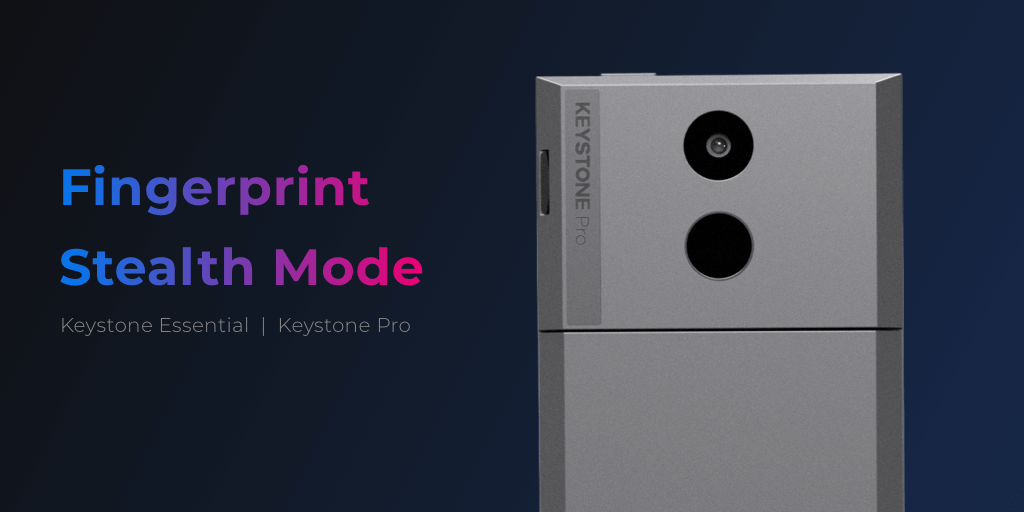
Under the hood, the Keystone Pro comes with a secure element chip as well as open-sourced firmware similar to the ColdCard or Passport architecture. You can also add entropy to your seed with dice rolls and verify them with Ian Coleman’s Mnemonic Code Converter, which I love. By default, the Keystone Pro unfortunately stores thousands of coins, though they do provide an option for bitcoin-only firmware.
The device’s exterior is secured via a relay that automatically wipes the device if someone tries to pry it apart, which helps lessen the chance of a physical attack on the device. Keystone also provides simple web-based supply chain authentication that makes it easy to authenticate that you’re holding a genuine device. However, this could be intercepted since it is the device itself which tells you the website URL for authentication.
Formerly known as the Cobo Vault, the company behind the Keystone has experience building hardware wallets since late 2018, which is less than many other players in the market today like Coinkite, Ledger, and Trezor. Keystone provides decent guides for their devices, but you won’t find as many reviews and walkthroughs from the community as you will for other devices, so just keep that in mind if you choose to buy a Keystone. I still recommend a ColdCard Mk4, especially given the price point for the comparable Keystone Pro.

Video: KEYSTONE WALLET – Secure Your Bitcoin – BTC Sessions
Guide: Setting Up Keystone – Keystone
NGRAVE ZERO: Lots of Flash, Less Substance
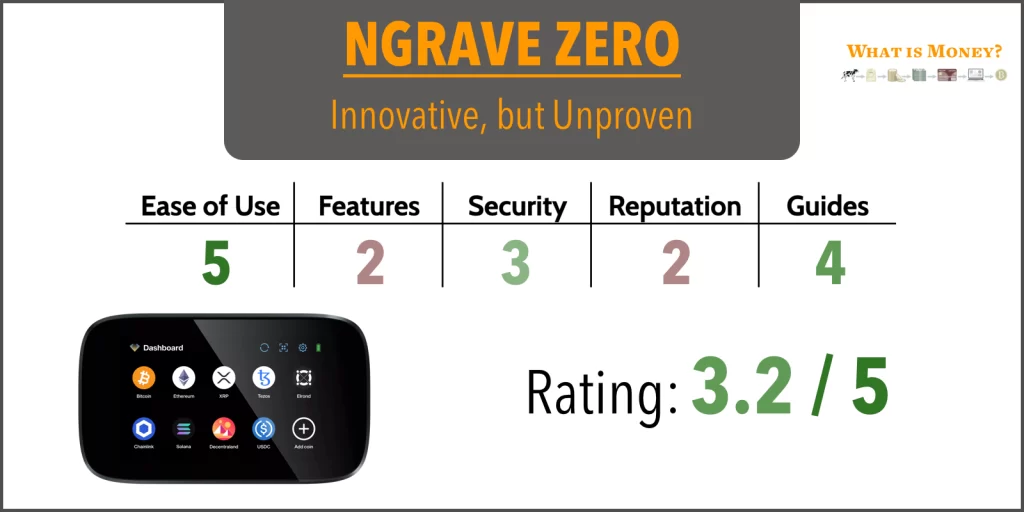
The NGRAVE ZERO is a very new wallet from an unproven team, but it’s receiving a lot of hype from the community. Generally hype around a hardware wallet turns me off, but I decided to look deeper into this device since they are doing a few innovative things.
For one, the device looks and feels premium. You get a 4 inch 480x800px color touchscreen and a water- plus dust-resistant body. Transactions are signed using the NGRAVE LIQUID app on your smartphone and dynamic QR code scanning, ensuring completely airgapped operation like the Foundation Passport. A fingerprint scanner also helps to control device access and transaction confirmation.
What I really appreciate about the NGRAVE is how it handles backup seed generation and storage. As a refresher, a seed is 12 or 24 words that represent your entire bitcoin wallet. This eliminates the risk of a failing signing device causing you to lose your bitcoin (i.e. dropping your Trezor in the toilet!) but it has its downsides. If those words fall into the wrong hands, that person now has control of your bitcoin (unless you use a passphrase!).
Additionally, many hardware wallets simply present you with your seed phrase without allowing you to increase the entropy (randomness) of that phrase by inputting real world data, like the results of dice rolls you do yourself. Without you introducing randomness, you are trusting that the hardware wallet manufacturer included a truly random number generator in your device.
The NGRAVE ZERO derives entropy during seed phrase generation from real world sources: the integrated camera and fingerprint sensor. No dice rolls required. The ZERO also displays your seed as a 64-digit hexadecimal code, though you can still access a traditional 24-word seed.
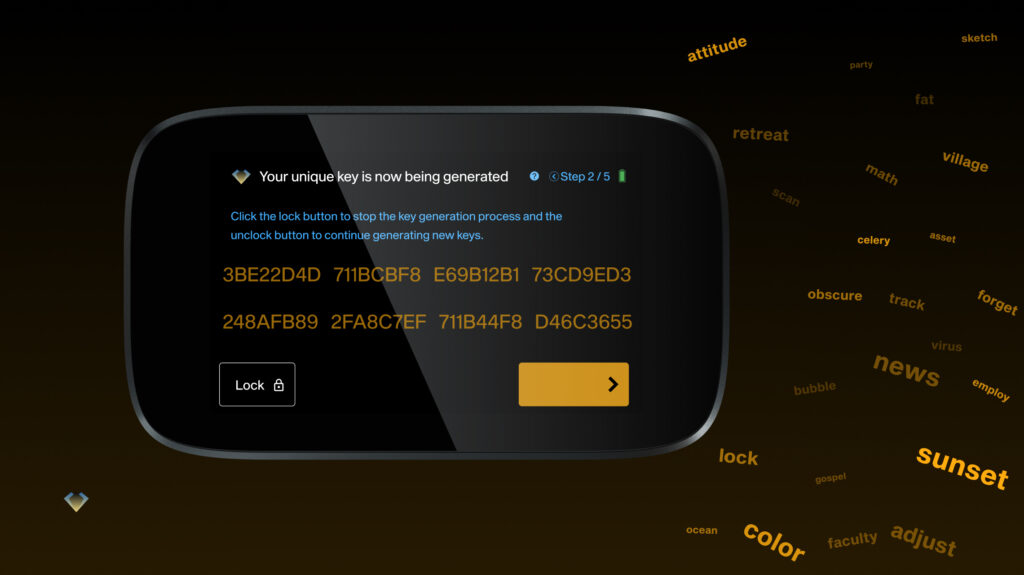
NGRAVE sells a separate backup solution called GRAPHENE that is an industry first for seed preservation. Instead of saving the seed words on a single piece of steel, the GRAPHENE uses two metal plates: a top plate ‘legend’ with randomized locations for 0-9 and A-F, and a bottom plate with no markings whatsoever. By laying the top plate on the bottom and using a metal punch to mark each digit of your 64-digit seed, you create a backup that can be easily read with both plates but is indecipherable with just one plate. If you lose either plate, NGRAVE has a way to help you recover them, without them holding any secrets relevant to your seed. NGRAVE calls this entire setup the Perfect Key. That’s a little hyperbolic if you ask me, but it is a unique concept.
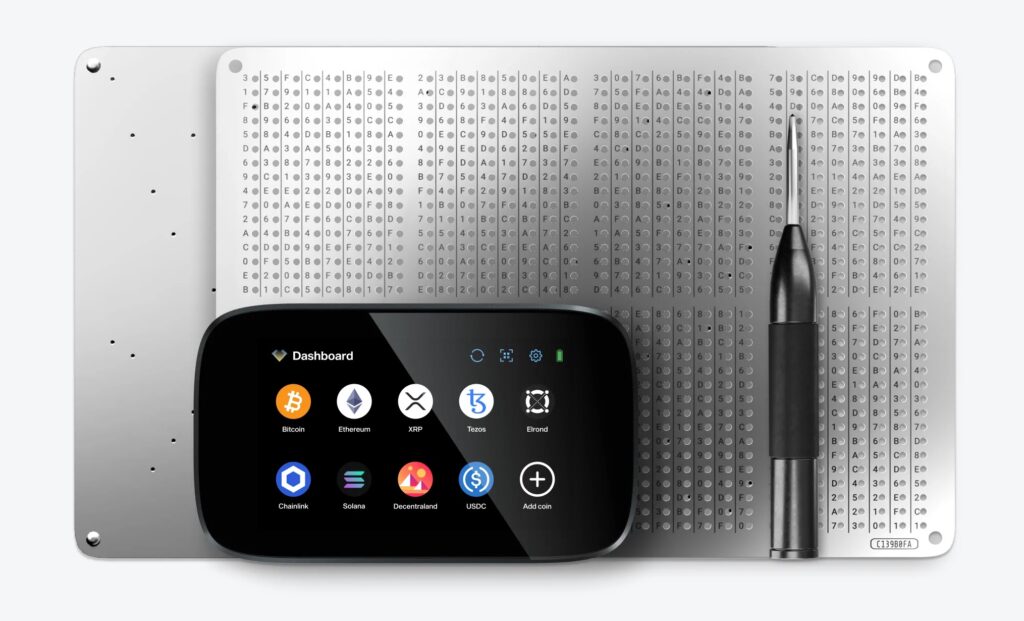
Beyond ease of use and this unique seed generation and storage feature, the NGRAVE ZERO starts looking worse. You’ll need to use a tool to convert your 64-digit code into the industry-standard 24 word seed phrase, since no other wallets accept the ZERO’s hexadecimal seed format.
The ZERO also doesn’t work with third-party wallets – you must use the LIQUID mobile app, which doesn’t put funds at risk but may compromise privacy by leaking your transaction history and public keys. The ZERO supports many cryptocurrencies beyond Bitcoin, and it does not yet support the popular BIP-39 passphrase functionality, which is an industry standard for all signing devices now. A passphrase essentially adds a 25th seed word, greatly enhancing security and flexibility for Bitcoin holders to create decoy and hidden accounts.
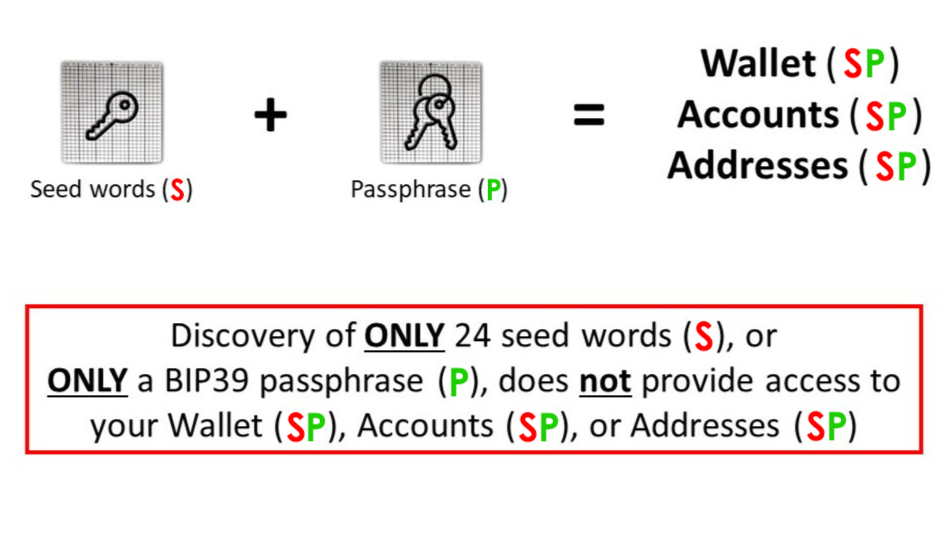
Finally, the ZERO’s firmware is not open-source, which is a huge let down for bitcoiners who live by the motto “Don’t trust, verify.” NGRAVE is a new company, with the ZERO being their first product – so there is no track record and only a few video reviews and guides out there from the community. While they did apparently collaborate with Jean Jacques Quisquater, a renowned cryptographer whose work on secure timestamping services was cited in the Bitcoin white paper, this is not enough to convince me to load funds on this device. Back in 2017, everyone and their mother had a famous cryptographer as an advisor to their project, and many of those were outright scams!
The ZERO is also incredibly expensive, costing more than twice what most hardware wallets cost. Ease of use is where the ZERO shines, so if you’re looking for that I’d recommend a BitBox02 or Foundation Passport over this device.
Regardless, if you’d like to purchase the ZERO you can find the shop linked below. The ZERO can also be bought as a combo with the GRAPHENE seed backup solution, which is made up of two hefty steel plates the size of A5 paper: 5.8 x 8.3 inches. Each plate weighs 682 grams or about 1.5 pounds!

Tutorial Videos: Use & Care Guide – NGRAVE
Ledger Nano S Plus and Nano X: Established Players #2
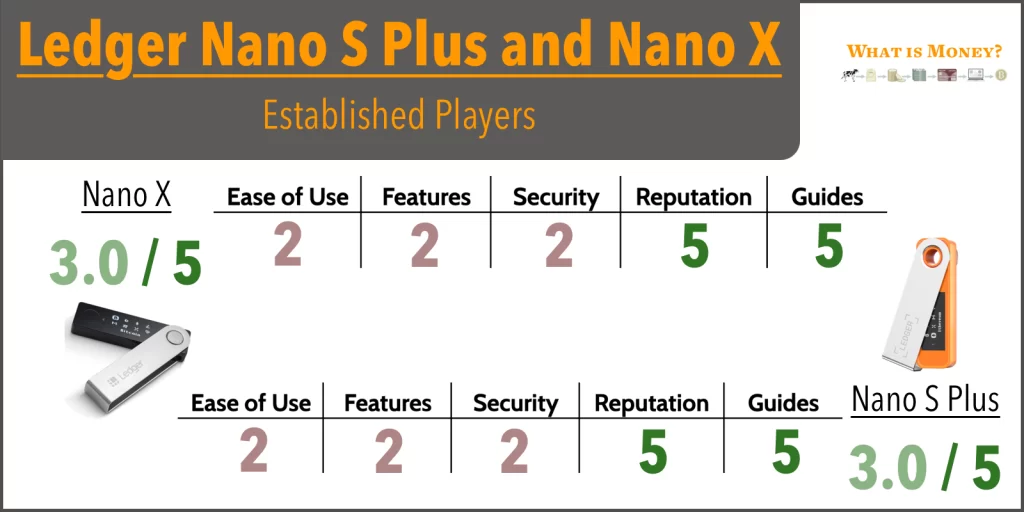
I’ve owned a Ledger Nano S for many years, though I used it progressively less over time as I came to appreciate the Trezor more.
My first gripe with the Ledger devices is usability. Ledger gives you a very small screen on both the Nano S Plus and Nano X, and navigation is done through just two buttons. They do give you the Ledger Live app for managing your bitcoin, however I always found it less intuitive than the Trezor Suite. Despite a price point on par with the comparable Trezor devices, the Nano X is the same price as a ColdCard without many of the advanced features and security systems of that device.
Both Ledger devices use a secure element to mitigate many types of attacks, however Ledger made the decision to trust this closed-source chip with secrets – unlike how the ColdCard and BitBox02 utilize their secure element. The Nano X includes Bluetooth connectivity to allow phone wallets to use the Nano X to sign transactions, however this opens up another attack vector for the device. Both Ledgers support thousands of different coins as well, with no option for Bitcoin-only firmware.
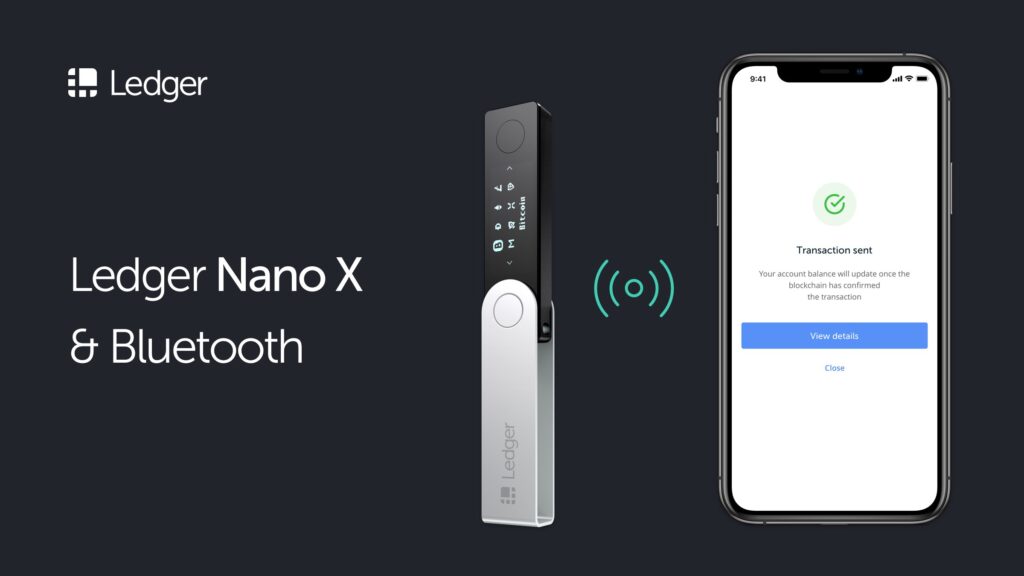
Ledger does have time on its side, with the company selling signing devices since 2014. They do have a generally good reputation in the industry, though the company’s customer database was famously hacked in July of 2020, leading to the leak of many names and associated physical addresses of people who purchased Ledger devices. Not good. This led to an industry-wide push to clear out this data, especially for hardware wallet manufacturers. Trezor deletes customer data after 90 days, and Coinkite deletes after 120 days.
Due to time in the market and Ledger’s popularity, you’ll find many third-party reviews and walkthroughs for Ledger devices, as well as great resources from Ledger support.
The pricing for the Nano S Plus and Nano X are in line with the Trezor Model One and Model T, so they’re fairly priced devices for what you get. That said, if you care deeply about security you’re better off with a ColdCard, which is priced around the Ledger Nano X and Trezor Model T.
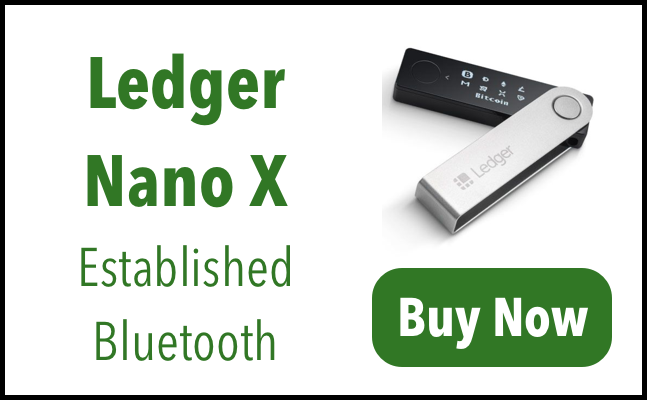

Ledger Nano X
Video: How To Use A Ledger Bitcoin Wallet On Desktop – BTC Sessions
Guide: Set Up Your Ledger Nano X – Ledger
Ledger Nano S Plus
Video: Ledger Nano S Plus TUTORIAL – Secure Your Bitcoin – BTC Sessions
Guide: Set Up Your Ledger Nano S Plus – Ledger
KeepKey: Cheap but Less Secure
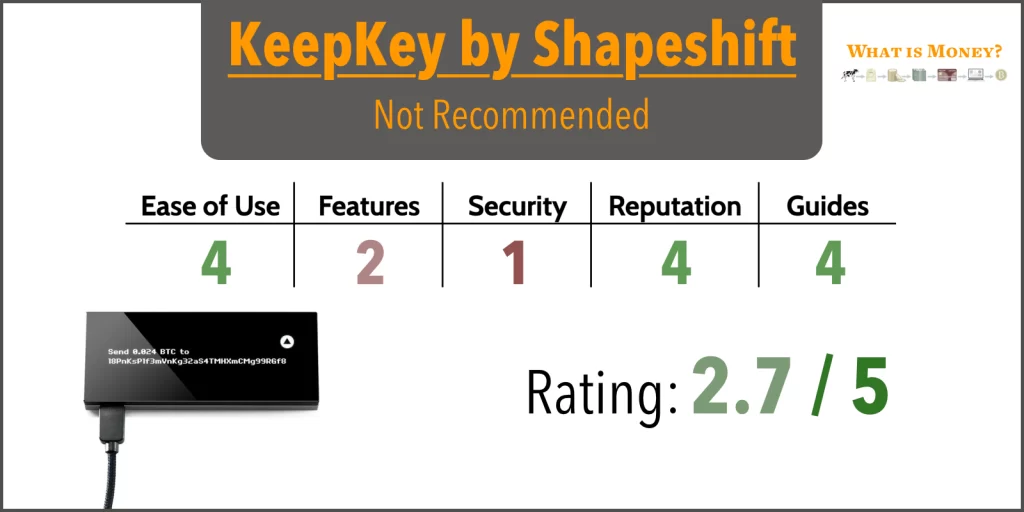
I’ll spare you a long explanation here, since I don’t believe the KeepKey is a good option for just about any Bitcoin holder. It is slightly cheaper than the cheapest options on the market, but fails on security.
Like the Trezor, the KeepKey only uses a microcontroller without any secure element, meaning the device is open to attacks like electromagnetic fault injection. By default, the device only generates a 12-word seed instead of 24 words, which is the industry standard. The setup process also doesn’t force the user to repeat back the seed words, which helps ensure they were written down. Finally, PIN and passphrase entry need to be done on a connected computer, despite the large screen on the KeepKey.
On the plus side, the KeepKey has a legible 256 x 64 px 3.12 inch OLED display that makes it easy to read long bitcoin addresses and display address QRs onscreen. There are no advanced features with this wallet, aside from simplified trading directly off the device through the Shapeshift platform. For a long term Bitcoin holder, that’s not much of a benefit. Plus, the KeepKey supports a whole host of coins beyond Bitcoin, increasing the attack surface of the code on the device.
KeepKey was acquired in 2017 by the crypto exchange platform Shapeshift, founded by Erik Voorhees who has been active in the crypto space for over a decade. This lends some trust to the KeepKey, but not enough to justify the clear security shortcomings.
The KeepKey is the cheapest hardware wallet I looked at, but I’d still recommend shelling out a bit more for a Trezor or going with the gold standard ColdCard. You’ll thank yourself later!

Video: How to Set Up the KeepKey – The CryptoDad
Guide: Getting Started with KeepKey – Shapeshift
Caution: Read Before Buying!
Before you buy a device, you should know to look out for these traps.
- Always buy from the hardware manufacturer directly
- Google the company and device’s reputation
- Watch some real video reviews online – if you can’t find any real ones, don’t buy!
Never buy a hardware wallet from a reseller, including Amazon! Only buy from the official shop of the hardware manufacturer, such as https://store.coinkite.com/store for ColdCard and https://shiftcrypto.shop/ for BitBox02.
When you receive the device and begin setup:
- Check the packaging and device for signs of tampering
- Verify the firmware (ColdCard supports this) [Advanced]
- Prepare for safe seed phrase storage by reading our guide on seed phrase storage.
Welcome to Self-Custody
Buying and successfully using a hardware wallet can seem like a daunting process, but the many guides and resources out there will help you make the best choice and confidently navigate your new device. Taking custody of your Bitcoin is a powerful step in your journey to financial independence and self-sovereignty!
Welcome!

